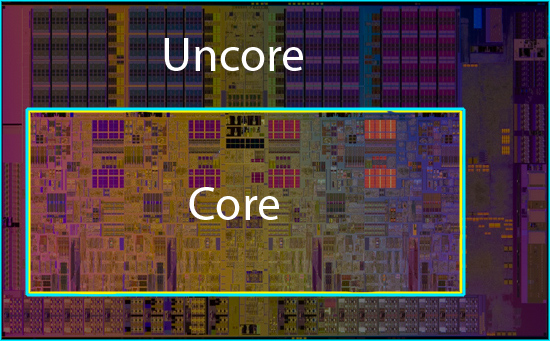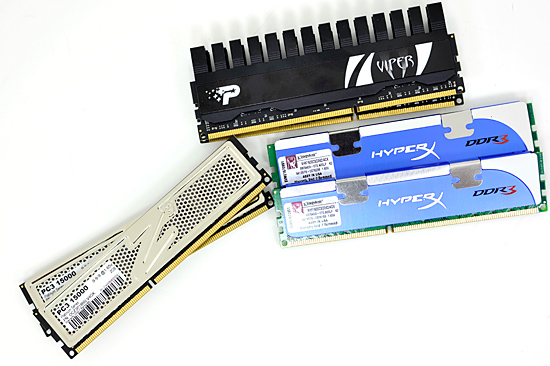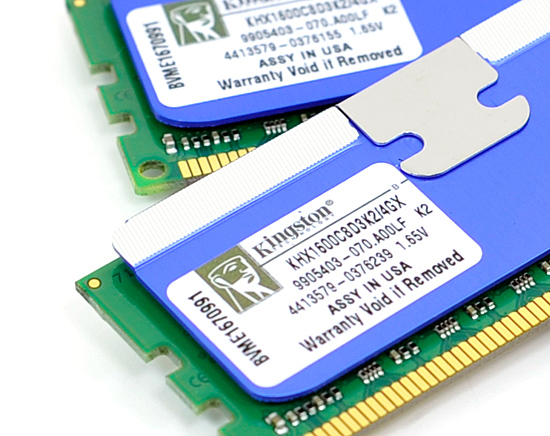Intel's Core i7 870 & i5 750, Lynnfield: Harder, Better, Faster Stronger
by Anand Lal Shimpi on September 8, 2009 12:00 AM EST- Posted in
- CPUs
Lynnfield's Un-Core: Faster Than Most Bloomfields
A few years ago I had a bet going with AMD's Ian McNaughton. We were at an AMD event where the Phenom architecture was first being introduced and he insisted that the L3 cache was part of the memory controller. This didn't make any sense to me so I disagreed. Minutes later a presentation slide went up on a projector talking about how the L3 cache and memory controller were on the same voltage plane; that's what he meant. Ian laughed a lot and to this day he holds it over my head.
The moral of the story is in Phenom and later in Nehalem, the processor is divided into two parts. Intel named them the core and the un-core. The "core" of these multi-core processors is made up of each individual processor core and its associated private caches (L1/L2). The "uncore" refers to everything else: PCIe controller, memory controller, DMI/QPI and the L3 cache.

The uncore isn't as critical for performance but is made up of a ton of transistors; roughly 400 million in the case of Lynnfield/Bloomfield (more if you count the PCIe controller). In order to save power, Intel uses slower transistors that have lower leakage for the un-core. As a result, the un-core can't clock up as high as the core and runs at a lower multiplier.
Take the Bloomfield Core i7 975 for example. The core runs at 25x BCLK (25 x 133MHz = 3.33GHz), but the un-core runs at 20x BCLK (20 x 133MHz = 2.66GHz). The rest of the chips, including Lynnfield, have slower un-cores:
| CPU | Socket | Core Clock | Un-Core Clock |
| Intel Core i7 975 Extreme | LGA-1366 | 3.33GHz | 2.66GHz |
| Intel Core i7 965 Extreme | LGA-1366 | 3.20GHz | 2.66GHz |
| Intel Core i7 950 | LGA-1366 | 3.06GHz | 2.13GHz |
| Intel Core i7 940 | LGA-1366 | 2.93GHz | 2.13GHz |
| Intel Core i7 920 | LGA-1366 | 2.66GHz | 2.13GHz |
| Intel Core i7 870 | LGA-1156 | 2.93GHz | 2.40GHz |
| Intel Core i7 860 | LGA-1156 | 2.80GHz | 2.40GHz |
| Intel Core i5 750 | LGA-1156 | 2.66GHz | 2.13GHz |
Here's another area where Lynnfield is better than the lower end Bloomfields: its uncore runs at 2.40GHz instead of 2.13GHz. The exception being the Core i5 750, its uncore is stuck at 2.13GHz as well. Once again, only the "Extreme" Bloomfields have a faster uncore.
Lynnfield's Memory Controller: Also Faster than Bloomfield
Intel only officially supports two memory speeds on Bloomfield: DDR3-800 and DDR3-1066. Obviously we're able to run it much faster than that, but this is what's officially validated and supported on the processors.
Lynnfield is a year newer and thus gets a tweaked memory controller. The result? Official DDR3-1333 support.

Three Lynnfield memory kits (left to right): OCZ, Patriot and Kingston
The same sort of rules apply to Lynnfield memory kits that we saw with Bloomfield. You don't want to go above 1.65V and thus all the kits we've seen run at 1.5V for the stock JEDEC speeds or 1.65V for the overclocked modules.

Like Bloomfield, 1.65V is the max we'll see on Lynnfield










343 Comments
View All Comments
Genx87 - Tuesday, September 8, 2009 - link
But after looking at the gaming benchmarks. I am wondering if the i5 is worth the cost to upgrade from an E8400? The best I could come up with from the graphs was the Q9560@3Gz or the E8600. In most of the games they were within a few % points. Ill have to see how the i5 does with the new round of cards from AMD\Nvidia before making a decision if I am going to build a new machine or just upgrade the GPU this winter.Kaleid - Tuesday, September 8, 2009 - link
Do like I do. Buy a better GPU. I'll stick to my e8400 at least until the 32nm CPU's arrive.And according to the guru3d review overclocking makes dramatically increases power consumption during load:
"Once we overclock to 4.1 GHz... the power consumption all of a sudden is 295 Watts (!), so an additional 1200 MHz of power is costing us an additional 133 Watts."
http://www.guru3d.com/article/core-i5-750-core-i7-...">http://www.guru3d.com/article/core-i5-7...re-i7-86...
papapapapapapapababy - Tuesday, September 8, 2009 - link
"the lowest Lynnfield is a faster gaming CPU than Intel's fastest dual-core: the E8600"bullshit. the E8600 has higher minimum frame rates umm know "when it matters the most"
http://images.anandtech.com/reviews/cpu/intel/lynn...">http://images.anandtech.com/reviews/cpu/intel/lynn...
scooterlibby - Tuesday, September 8, 2009 - link
Nice review. Lynnfield seems like a great deal too for people building a new system, but from a gaming standpoint, I don't see enough performance difference to upgrade my overclocked e8400 setup. Guess it'll be Sandybridge for me!rbbot - Tuesday, September 8, 2009 - link
What is the maximum memmory you can fit onto a P55 chipset? I notice the Gigabtye board has 6 dimms but their website still says Max 16Gb?Is there a 16Gb chipset limit? Would it increase once those new high-capacity dimms from samsung make an appearance?
the machinist - Tuesday, September 8, 2009 - link
I really don't know what to make of all this. I am about to buy i7 920 and over clock it to 3.6GHZ and then sometime next year upgrade the CPU to i9 6 core on LGA 1366. SLI does not interest me... cores/threads and clock speed are my main concern for 3d rendering.Is there any reason for someone like me to get this new platform instead? Please advice me.
rsher - Tuesday, September 8, 2009 - link
I wish I had an answer for you. I am in the same situation. If you do get a good reply please post it so I could figure out what to buy..BTW what is the i9 CPU?I have some time before I need to upgrade. HAve you considered using the Xenon processors... I use MAX 2010..
rSher
.
the machinist - Tuesday, September 8, 2009 - link
rSher Xeon are overkill these days considering the price premium. Single socket CPUs are so powerful these days that I just don't see the bang for the buck when it comes to Xeons. i7 920 over clocked matches some of the mid level Xeons anyway. If I was minting it and rendering only then I would get pair of high end XeonsRegarding your other question....
i9 will be 6 core version that will come out next year and you can use them on LGA1366 Mobos. I think a 8 core version will come out too. They will be expensive but by the time I decide to upgrade they should be less expensive.
PassingBy - Tuesday, September 8, 2009 - link
Can get single socket Xeon machines as well. The reason that professional users often prefer them is for ECC support. Up to you whether that matters for your applications. Naturally, for servers, ECC is the norm and that is also the situation for most professional workstations. Xeons can overclock as well, perhaps sometimes even better than the desktop equivalents, but professional users rarely overclock.Ann3x - Tuesday, September 8, 2009 - link
In some respects a great article. However the assertation that anything below the top end 1336 cpus are pointless is pretty obsurd.As others have stated the headroom and potential overclock of ANY d0 920 easily beats these new processors.
As it is, i7s are aimed at enthusiasts. FOR AN ENTHUSIAST *ie someone willing to tweak and OC* the 920 is still by fast the best bang for buck choice.
The new platform is only better if no tweeking is carried out (ie if youre not a technical user).
Therefore were left with a column aimed at technical users saying something that is only relevant to non technical users. At best its a gross simplification. As worst its missleading.
Yes, the new platform is good for the mass market, yes its exciting. However keep some perspective with your audience, the i7 920 is still BY FAR the best performance value for money CPU if you have the knowledge required to get the most out of it (as the majority of people buying X58 do).